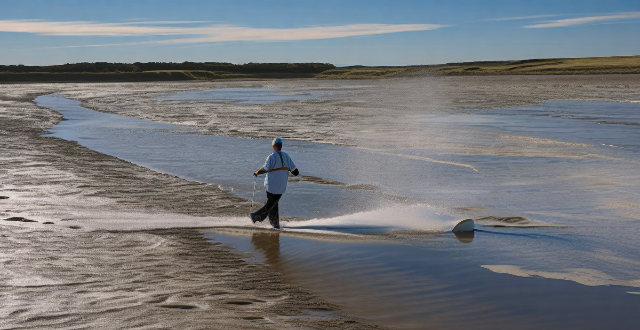Climate services play a critical role in water resources management by providing accurate and timely information on weather patterns, climate change, and related phenomena. These services can be used to forecast precipitation, monitor river levels for flood early warning systems, assess the impact of climate change on water availability, plan adaptation measures, monitor drought conditions, manage water quality, and protect ecosystems. By leveraging these services, we can ensure the effective use of water resources, adapt to changing climates, prepare for extreme weather events, and guarantee a sustainable water supply for future generations.

How Can Climate Services Be Used to Manage Water Resources Effectively?
Introduction
Water resources management is a critical aspect of sustainable development, and climate services play a vital role in ensuring the effective use of these resources. By providing accurate and timely information on weather patterns, climate change, and related phenomena, climate services help water managers make informed decisions that balance the needs of people, ecosystems, and the economy. In this article, we will explore how climate services can be used to manage water resources effectively.
Climate Services for Water Resources Management
1. Forecasting and Early Warning Systems
*Precipitation Forecasting*
- Short-term forecasts: Help in operational decision-making such as reservoir operations and irrigation scheduling.
- Medium-term forecasts: Aid in planning activities like crop planting and water allocation.
- Long-term forecasts: Useful for strategic planning, including infrastructure development and drought preparedness.
*Flood Early Warning Systems*
- Rainfall monitoring: Real-time data helps predict potential flood events.
- River level monitoring: Allows for the anticipation of flood risks and timely responses.
2. Climate Change Impact Assessment
*Assessing Future Water Availability*
- Modeling future scenarios: Projections of temperature, precipitation, and evapotranspiration changes.
- Understanding variability: Analyzing historical trends to anticipate future conditions.
*Adaptation Planning*
- Infrastructure design: Considering future climate conditions in the design of dams, levees, and other structures.
- Policy formulation: Developing policies that account for climate change impacts on water resources.
3. Drought Monitoring and Management
*Drought Early Warning Systems*
- Soil moisture monitoring: Tracking soil moisture levels to identify drying trends early.
- Vegetation health tracking: Satellite imagery can indicate stress due to water scarcity.
*Response Strategies*
- Water rationing: Allocating limited water supplies based on priority needs.
- Reservoir management adjustments: Optimizing reservoir operations during dry periods.
4. Water Quality Protection
*Temperature Monitoring*
- Thermal pollution prevention: Keeping tabs on water temperatures to prevent harm to aquatic life.
- Algal bloom prediction: Warm waters can lead to algal blooms, affecting water quality and availability.
*Precipitation Quality Analysis*
- Acid rain monitoring: Measuring pH levels in rainwater to protect ecosystems and water sources.
- Pollutant load assessment: Evaluating runoff from urban and agricultural areas to mitigate contamination.
Conclusion
Climate services are indispensable tools for water resources management. They provide the necessary data and predictions to enable proactive measures that conserve, protect, and wisely utilize our water resources. By leveraging these services, we can adapt to changing climates, prepare for extreme weather events, and ensure the sustainability of our water supply for future generations.